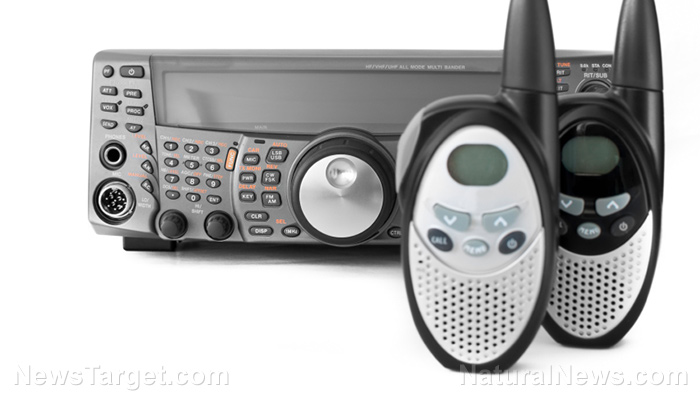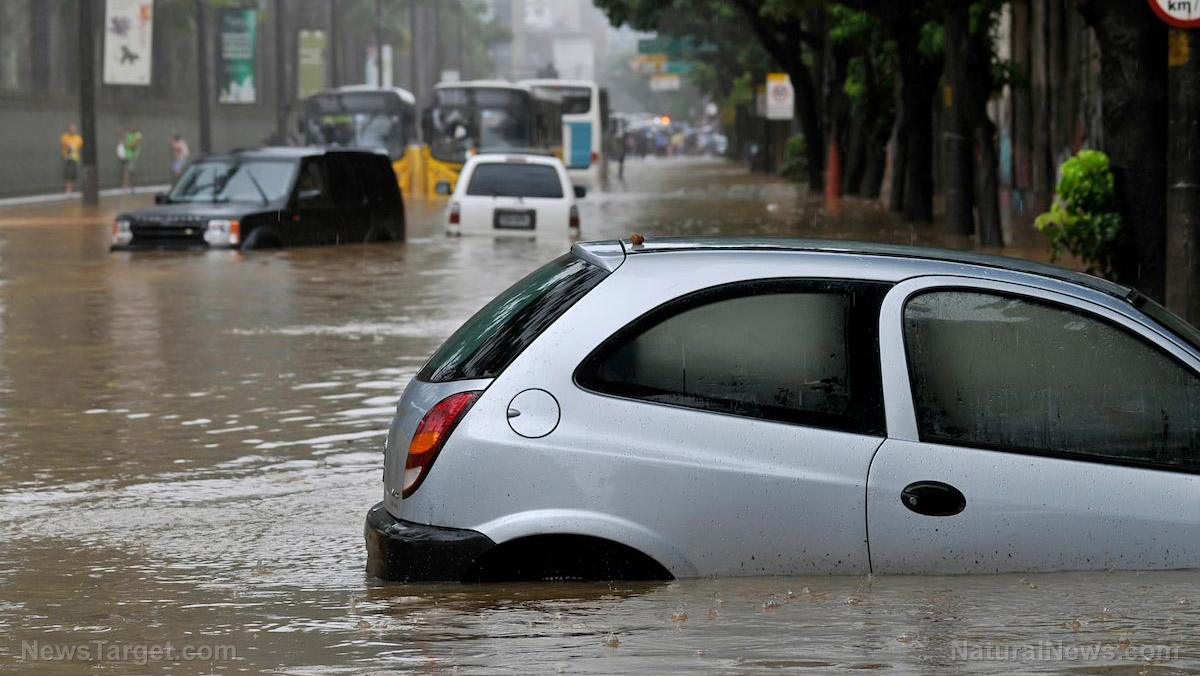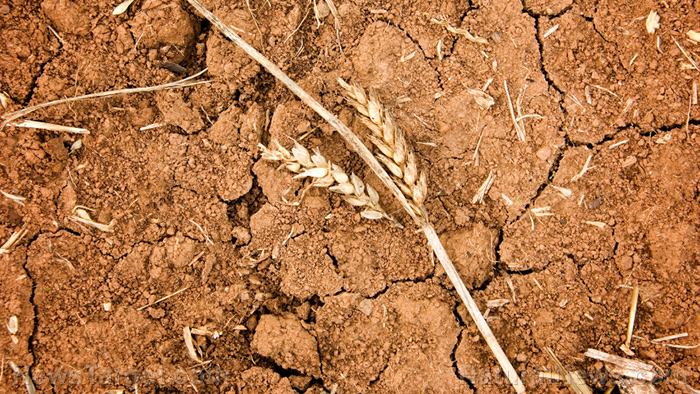 Parler
Parler Gab
Gab
Emergency comms basics
When prepping emergency communications, start with common means of radio communications, like AM and FM commercial broadcast stations. After a disaster, they will be relaying crucial information about conditions and situations. Note that all licensed AM and FM radio stations are required to participate in the Emergency Alert System (EAS). EAS is managed by the Federal Emergency Management Agency and is designed to deliver reliable and dependable emergency communications through standard broadcast facilities. When preparing a bug-out bag or survival kit for bugging out, include a small portable radio that receives both AM and FM broadcasts. While these radios aren't capable of two-way communications, being able to receive information about local conditions and situations will help you assess current disaster situations. You don't need expensive and high-tech gear. You can just get a portable solar and crank-powered AM/FM radio so you can access the Emergency frequencies and National Oceanic and Atmospheric Administration (NOAA) weather radio service wherever you are after SHTF. Closely monitor several known radio station frequencies in both the AM and FM bands. In most cases, the same message will be broadcast by multiple stations using the EAS.Shortwave receiving
When times are normal, listening to shortwave broadcasts can be an enjoyable hobby. After SHTF, it's also one way to get up-to-date information from radio broadcasters even if they're thousands of miles away. Shortwave broadcasts usually occur between 1700 KHz and 30 MHz. In the past, governments and many private organizations worldwide operated high-power shortwave stations. But with the skyrocketing popularity of the internet and social media, many of these stations have scaled back their operations. In the past 100 years or so, shortwave receiving sets were large and bulky and they needed expensive tubes to work. After technological advances in electronics, receiving sets are now much smaller. You can buy a small, portable shortwave receiver that will cover all essential frequencies when SHTF. Use these shortwave receivers to monitor the frequencies normally used by the big shortwave broadcasters and scan the frequencies for amateur radio operators still communicating. Here are some of the best shortwave broadcast stations to monitor for up-to-date information:- BBC – Frequency 6.005
- Bit Express – Frequency 15.785
- HCJB Deutsch – Frequency 3.995
- Radio Free Asia – Frequency 17.64
- Vatican Radio – Frequency 9.64
Two-way communications
With an internet connection and a smartphone, you can talk to anyone if you have service. But after SHTF, you need a reliable tool to communicate that doesn't rely on the grid. (Related: Mike Adams, Steve Quayle and Tina Blanco discuss the importance of satellite phones.) Before disaster strikes, prepare a comms backup plan that uses some sort of two-way battery-powered radio that can receive and transmit. Here are some options to consider: In the amateur radio world, "walkie talkies" are small handheld devices that are also called handy-talkies or handhelds. Through the years, handhelds have evolved from the size of a bread loaf to compact equipment that is no bigger than your hand. Many handheld two-way radios use frequencies that make long-distance communications impossible. Generally, handhelds work at ranges from one-half to five miles, depending on the terrain and conditions. Two-way radios operate on channels assigned to a specific frequency. Emergency organizations don’t use these relatively inexpensive and low-power devices. They are best for short-range contact among family or friends, but they're not as effective for emergency radio frequencies. CB radios for emergency use are still popular among preppers. The Radio Emergency Associated Communication Teams (REACT ) groups across the U.S. routinely use CB radios for emergency radio communications. REACT has its roots in CB radio so it's no surprise that the organization continues to communicate via CB radio frequencies. In many areas, REACT groups monitor various CB channels. Some provide 24-hour monitoring, but others are only active when there's a potential weather-related problem. If you opt for a CB radio, here are some of the CB channels to remember:- Channel 3 – Monitored by members of the Prepper CB Network
- Channel 4 – The American Preppers Network
- Channel 37 – Prepper 37
HF, VHF and UHF emergency radio frequencies
Look into amateur radio, also known as HAM radio, if you want to beef up emergency radio communication capabilities when SHTF. This class of radios requires an amateur radio license to operate legally. After you take a HAM radio license exam, you can communicate over much longer distances and use more sophisticated digital messaging systems. Ultra high -frequency (UHF) and very high-frequency (VHF) radios are commonly used by emergency organizations for intermediate-range radio communications. With a repeater system, the range of these radios can be unlimited if the repeater and its linking system are operational. UHF and VHF radios must get an amateur radio license issued by the Federal Communications Commission (FCC) to operate legally. To get this license, you need to send an application to the FCC and take an exam. The entry-level technician license allows you to operate privileges on both UHF and VHF frequencies. Various emergency and relief agencies use VHF and UHF frequencies for local communications. Below is a list of VHF and UHF frequencies often used for emergency communications: NOAA NOAA broadcasts weather information 24/7 using the following frequencies. It's a very reliable way of checking current weather conditions.- 162.4
- 162.425
- 162.45
- 162.475
- 162.50
- 162.525
- 162.55
- 144.200
- 146.520
- 432.100
- 446.000
HF frequencies for emergency ops
High-frequency (HF) radio may be best for long-distance communications when the grid and other infrastructure in your area are down. A high-frequency radio transceiver can send and receive messages over thousands of miles. To use an HF radio, you will need an FCC license to operate legally. While all frequencies allocated for amateur radio are useable for emergency communications, there are groups and organizations that routinely practice and train for emergency communications on specific frequencies. Monitor or join one of these frequencies on the air sessions to hone your radio skills. These organizations include the Salvation Army team Emergency Radio Network (SATERN), which operates a worldwide network of HAM radio operators and stations to maintain communications using various frequencies. The SATERN International USB V0ice Net operates on 14.325 MHz Mondays, Wednesdays and Fridays at 10:30 EST. Communications are essential to modern society and reliable communications will be even more important after SHTF. When natural or man-made disasters ravage your location, you may be stranded without information or the ability to contact your loved ones. Plan ahead and get the required licenses so you can operate a radio system that suits your prepping needs in these types of situations. Watch the video below to know more about integrative prepper skills and drills. This video is from the Health Ranger Report channel on Brighteon.com.More related stories:
Survival essentials: 10 Emergency supply tips for preppers. The Health Ranger talks about satphones and emergency satellite text messaging with Chris Hoar – Brighteon.TV. Prepper essentials: SHTF emergency communication plans for your family. Sources include: SurvivalCache.com ARRL.org Brighteon.comPosh LA boutique bans face masks in a bid to prevent looting
By Ramon Tomey // Share
Freight operations delayed due to heavy rain, floods in Dallas-Fort Worth area
By Belle Carter // Share
Heatwaves and drought threaten autumn crops in China
By Mary Villareal // Share
Russian envoy submits photo evidence of Ukrainian attacks on the Zaporizhzhia nuclear power plant
By Belle Carter // Share
Governments continue to obscure COVID-19 vaccine data amid rising concerns over excess deaths
By patricklewis // Share
Tech giant Microsoft backs EXTINCTION with its support of carbon capture programs
By ramontomeydw // Share
Germany to resume arms exports to Israel despite repeated ceasefire violations
By isabelle // Share










